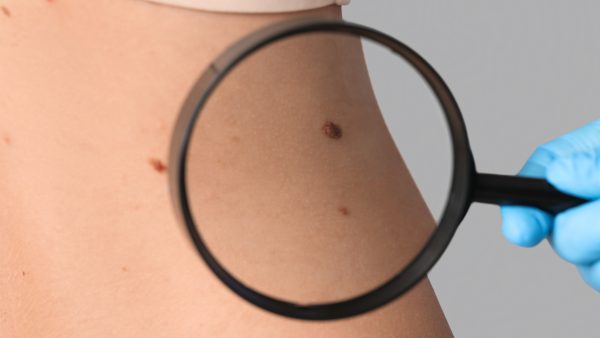Looking for Expert-Level VA Claim Answers?📱Call Us Now! 737-295-2226
The Veterans Administration reports that over 50,000 veterans are diagnosed with cancer each year—but many don’t realize they’re entitled to VA disability benefits.
After serving your country, facing a cancer diagnosis can feel like an unfair second battle. Navigating VA disability for cancer can be confusing, with complex ratings and criteria to understand.
In this guide, we break down the process of securing VA disability for cancer. We’ll help you determine if you qualify, and show you how to get the VA benefits you deserve—without the stress.
Table of Contents
Summary of Key Points
- Cancer VA disability ratings can vary depending on factors like whether the cancer is in an active state.
- Veterans may qualify for 100% VA disability for many types of cancer.
- The VA has deemed specific service-related cancers as presumptive, meaning veterans don’t need an in-service event, illness, disease, or aggravation in order to prove service connection and receive VA compensation and benefits.
What Is Cancer?
Nearly any organ or tissue in the body can be affected by cancer. Certain areas of the body are prone to specific forms of cancer. The disease causes cells to divide uncontrollably and growl, forming a tumor mass. Cancer has metastasized if it spreads from one region (i.e., primary) to other body parts.
Below is a list of common cancer terms:
Tumors – abnormal growth of cells or tissue and are either benign (i.e., noncancerous) or malignant (i.e., cancerous)
Carcinomas – tumors arising from skin tissue or the lining of the internal organs)
Sarcomas – tumors that start in the bone or soft tissues such as muscles, cartilage, fat, and blood vessels.
Metastasis – when cancer spreads from its original or “primary” site to another part of the body through the blood or lymph system.
Melanoma – a type of cancer that arises from melanocytes (the cells that produce melanin)
Cancer stage – a way of describing where the cancer is (e.g., the size and location of the tumor, whether it’s spread, and if it’s impacting other organs)
Active cancer – a state of cancer in which the cancer cells multiply, and the tumor is growing)
Partial remission – the cancer has stopped growing or slowed down
Complete remission – there are no signs (e.g., tumors) or symptoms of cancer, but there may be some remaining cancer cells.

VA Disability for Cancer: Rating Criteria
You may qualify for VA disability benefits if you were diagnosed with cancer during or after active military service.
To receive veterans’ disability benefits for cancer, you must prove a connection between your medical conditions and an injury, illness, or event you suffered while serving in the military. However, several types of cancer don’t require proof of service connection because they are considered presumptive conditions.
Veterans diagnosed with cancer may qualify for specific VA benefits due to service-connected conditions such as disorders caused by toxic exposure.
If you are diagnosed with service-connected cancer in the active stage, you will likely receive a 100% automatic temporary VA disability rating.
Your 100% rating will continue as long as your cancer is active, then for another six months after chemotherapy (chemo), radiation therapy, surgery, or other types of cancer treatment are complete.
Then, once you’ve completed cancer treatment, the VA will schedule another C&P evaluation to determine your post-treatment health status and any residual symptoms. Residual symptoms include those caused by chemo, radiation, or other cancer treatments and/or cancer that has spread to other organs. This exam will result in a new disability rating assignment based on your updated diagnosis and current health status.
100% VA Disability for Cancer
The VA assigns various diagnostic codes (DCs) — depending on the type of cancer—at 100% disability rating. This temporary 100% VA rating is applicable for at least six months, followed by a mandatory C& P exam to evaluate for metastasis (spread of cancer to other organs or tissues) or recurrence. Your cancer disability will be assessed again based on the residuals of the disease.
A 100% VA rating is given from the date your cancer was diagnosed if the skin cancer requires treatment comparable to systemic (i.e., involving the entire body) cancers.
The 100% VA rating remains after your cancer treatment, including radiation therapy, chemotherapy, surgery, or any other cancer treatment,
Six months after treatment, a second C&P exam is required by the VA to rate any secondary or residual conditions under DC code 7914. This updated rating depends on various factors; for example, a person with breast cancer may have post-surgical residual symptoms such as impairment due to scarring or disfigurement.
Types of Cancer Rated by the VA
The VA rates cancer under eCFR: 38 CFR Part 4 —Schedule for Rating Disabilities under the specific type of cancer, using the diagnostic code (DC). There are several general categories, including:
- Breast cancer– DC 7630
- Digestive system cancer (e.g., malignant neoplasms of the colon, gallbladder, stomach, and other areas of the GI tract) – DC 7343
- Neoplasms (i.e., malignant abnormal growth) of the ear – DC 6208
- Endocrine cancer (i.e., cancer of the glands that secrete hormonal system, such as thyroid cancer) – DC 7914
- Genitourinary cancer (i.e., cancer of the genital or urinary organs, such as prostate and kidney cancer) – DC 7528
- Gynecological cancer (i.e., cancer of female reproductive organs, such as ovarian or cervical cancer) – DC 7627
- Oral cancer (cancer of the mouth, including soft and hard tissue) – DC 9918
- Muscle cancer (cancer that begins in the soft tissue, including the muscle, such as soft tissue sarcoma) – DC 5327
- Respiratory cancer (e.g., lung cancer) – DC 6819
- Skin cancer (i.e., malignant skin cancers other than malignant melanoma) – DC 7818
VA Disability for Prostate Cancer
There are several types of prostate cancer (DC 7528), including:
- Adenocarcinoma – develops in the prostate glands that produce prostate fluid
- Transitional cell carcinoma – begins in the cells lining the urethra (i.e., the tube that carries urine out of the body)
- Squamous cell carcinoma – develops in the flat cells that cover the prostate
- Other types
Prostate Cancer Residual Symptoms Ratings
The VA rates disability for residual symptoms of prostate cancer under frequent urination (DC 7517), voiding (i.e., urinating) dysfunction (DC 7528), and erectile dysfunction (DC 7522)
Below is a breakdown of how the VA rates these residual symptoms.
Frequent Urination is rated under 38 CFR § 4.115b, genitourinary system dysfunctions as DC 7517, referred to as “voiding (i.e., urination) dysfunction.
- Urination every two to three hours or waking up twice each night to urinate –10%
- Urination every one to two hours or waking up three to four times each night to urinate – 20%
- Urination at intervals of less than one hour or waking up five or more times each night to urinate – 40%
Voiding Dysfunction
Unlike urinary frequency (i.e., urinating often), voiding dysfunctions (e.g., urinary incontinence) involve continual urine leakage.
Urinary incontinence VA ratings are based on how often absorbent materials (e.g., adult diapers or pads) must be changed due to incontinence.
- Requiring the wearing of absorbent materials that must be changed less than 2 times per day – 20%
- Requiring the wearing of absorbent materials that must be changed 2 to 4 times per day – 40%
- Requiring the use of an appliance or the wearing of absorbent materials that must be changed more than 4 times per day – 60%
Erectile Dysfunction
Erectile dysfunction (DC 7522) is a common residual symptom caused by prostate cancer.
Erectile dysfunction is not compensated by the VA unless there is deformity associated with loss of erectile function. However, veterans who have been granted a service connection for erectile dysfunction are eligible to receive Special Monthly Compensation (SMC) under 38 C.F.R. § 3.350 for the loss of a creative organ.
See also: Top 3 Tips to Get SMC for ED

VA Disability for Skin Cancer
A cancerous skin tumor involves abnormal growth of tissue—also called a “neoplasm”— that creates a growth or lump in the body.
Skin cancer is classified as either a primary tumor (i.e., a tumor located at the original site) or a metastasis (i.e., a tumor that has spread to other organs or tissues in the body).
Metastatic skin cancer is rated by the VA using DC 7818, assigned a 100% VA disability rating for at least six months. Then, six months after the last cancer treatment, a mandatory VA exam is conducted. If there is no further metastasis or local recurrence, the disability will be rated based on any residuals from cancer (e.g., scarring or other complications) or its treatment.
Residual symptoms of skin cancer may include impaired function, scarring, or disfigurement.
Malignant (i.e., cancerous) skin neoplasms include:
- Lymphoma of the skin: An uncontrollable growth that can spread to other body parts through the blood supply.
- Kaposi sarcoma: A rare type of skin cancer that causes purple, flat, or raised lesions on one or more areas of the skin. The lesions can also grow in the lymph nodes (i.e., tissue located in the neck, armpits, and other areas that filter waste and bacteria from the body)
- Merkel cell carcinoma: A rare form of skin cancer that can be caused by a viral infection from the Merkel cell polyomavirus (MCPyV)
- Melanoma: An abnormal tissue growth on the skin considered a primary malignant (i.e., cancerous) neoplasm. If not treated early on it can become life-threatening; therefore, early intervention and treatment are essential.
- Squamous cell carcinoma: A type of skin cancer that develops in the flat, thin cells (i.e., squamous cells) of the epidermis, the outermost layer of the skin, often caused by excessive exposure to UV light from the sun.
- Basal cell carcinoma: Cancer of the basal cell layer of the skin (i.e., the deepest layer of the epidermis).
How the VA Rates Skin Cancer
Skin cancers are VA-rated as scars under DCs 7801-7805, disfigurements under DC 7800, or body system function impairments with a specific DC assigned, depending on the body system.
When a malignancy of the skin requires cancer treatment, a 100% rating is given from the onset of your condition under DC 7914. Like other cancer ratings, an exam will be scheduled six months after treatment to reassess your condition and assign a new rating for residual symptoms.
Chemical Exposure and Skin Cancer
An older 2010 study found that some types of skin cancer were significantly associated with the chemical Agent Orange, used in Vietnam. Fifty-one percent of veterans exposed to Agent Orange were found to have basal or squamous cell carcinoma.
Skin cancers, including melanoma and squamous cell carcinoma, are significantly linked with overexposure to sun or UV radiation during military service.
VA Disability for Melanoma
Melanoma is typically a type of skin cancer, but in rare instances, it can develop in other parts of the body. Like other skin cancers, melanoma is rated at 10% to 80% depending on many factors, including the body area affected, tissue loss, signs of disfigurement and other signs and symptoms under DC 7833 as scars (DC’s 7801, 7802, 7803, 7804, or 7805), disfigurement of the head, face, or neck (DC 7800), or impairment of function—under the specific body system impacted.
Breast Cancer VA Disability Ratings
Breast cancer VA ratings are 0% to 80%, under DC 7630, for malignant neoplasms of the breasts in the VA Schedule of Ratings.
Like all other types of cancer, under this code, a veteran receives a 100% rating while the cancer is malignant (i.e., spread to distant organs or tissues, also called metastasis).
The 100% VA rating for breast cancer continues for six months after your last cancer treatment; then, you will be rated on any residuals of cancer, such as:
- Cancer reappearance
- Osteoporosis (i.e., softening of the bone) development
- Scarring or disfigurement of the skin
- Mental health conditions resulting from trauma after undergoing treatment or in response to a drastic change of appearance (e.g., after a mastectomy).
VA Disability Rating for Thyroid Cancer
The thyroid is part of the endocrine system (i.e., a network of glands controlling hormones). Malignant neoplasms of the endocrine system are rated under DC 7914.
A diagnosis of thyroid cancer is automatically rated at 100% during active cancer and six months following treatment. After six months, residual symptoms are assessed, and a new rating is assigned accordingly.
Chemical Exposure and Thyroid Conditions
Chemical exposure, such as Agent Orange, can cause or contribute to the development of thyroid conditions, including cancer.
Thyroid cancer patients in the VA Health Care System have been exposed to Agent Orange at high rates. Hypothyroidism (i.e., low thyroid function) was recently added to the list of presumptive conditions for Agent Orange-exposed veterans.
Colon Cancer VA Ratings
After receiving a 100% colon cancer VA rating during and after colon cancer treatment (DC 7343), veterans may receive follow-up colon cancer VA ratings ranging from 10% to 60%, depending on residual symptoms or complications from colon cancer or its treatment.
Colon Cancer and Chemical Exposure
If a veteran was exposed to toxic substances from burn pits during the Gulf War or after 9/11, their disability may automatically be considered service-connected.

VA Disability Rating for Cancer in Remission
Your VA disability rating depends on whether you have active cancer or cancer in remission.
VA disability benefits continue for at least six months even if your cancer is in remission.
Generally, your cancer remission state will carry a 100% disability rating until a new exam shows otherwise. Your ongoing rating will be affected by any residual effects of cancer treatment, including scarring, pain, movement limitations, or lingering health issues.
See also: Increase Your VA Disability for Cancer in Remission
Is Cancer a Presumptive VA Disability?
Many types of cancer are on the VA presumptive list. Healthcare and benefits are expanded under the PACT Act law for those exposed to burn pits, Agent Orange, and other toxic substances.
Types of Presumptive Cancer
The VA offers an expanded list presumptive cancer eligibility list for Gulf War and post-911 veterans. If you have a current diagnosis for one of these specific cancer types and you served in certain locations during the specified time frames, your military service will be “presumed” to have caused your condition, and you won’t have to provide proof of service connection.
The following types of cancer are considered presumptively service-related by the VA under the PACT Act.
- Cancers caused by burn pit exposure – including brain cancer and neck and head cancer.
- Cancers caused by Agent Orange exposure – including prostate cancer, bladder cancer, Hodgkin’s disease, non-Hodgkin’s lymphoma, multiple myeloma, respiratory cancer, chronic B-cell leukemia, and sarcomas of soft tissues.
- Other types of cancer – include melanoma, kidney cancer, glioblastoma (an insidious type of brain tumor that grows rapidly), and gastrointestinal cancer (i.e., cancer of the stomach, intestines, and other digestive system organs).
See the VA’s complete list of burn pit presumptive cancer types here.
The VA offers an expansive list of presumptive cancer eligibility lists for Gulf War and post-911 veterans. If you have a current diagnosis for one of these specific cancer types and you served in certain locations during the specified time frames, your military service is “presumed” to have caused your condition; this means you won’t have to provide proof of service connection.
Your presumptive disability eligibility may be determined by your exposure to burn pits or service in a qualifying location if you have one of these cancers:
- Cancer of the brain (including glioblastoma and other brain cancers)
- Cancer of the head (including cancers of the scalp, face, mouth, aural areas [i.e., ears], lips, and hard or soft palate)
- Cancer of the neck (including the larynx [i.e., voice box], pharynx [i.e., throat] and other parts of the neck)
- Spinal cord cancer (including cancer that affects the cervical spine (i.e., neck region)
- Nervous system cancers
- Respiratory cancers (e.g., lung, nasopharyngeal, bronchial, and other respiratory cancers)
- Reproductive cancers (including cervical, ovarian, testicular, prostate, and other reproductive cancers)
- Gastrointestinal cancers (including liver, pancreatic, colon, or colorectal, gastrointestinal stromal tumors, and other types of GI cancer)
- Kidney cancers (i.e., renal and non-renal cell carcinomas)
- Melanoma (involving the skin, eye, or the lining of internal tissues)
- Lymphomas (including B-cell lymphoma, Hodgkin, and other lymphomas)
- Pancreatic cancers (i.e., exocrine and neuroendocrine pancreatic cancers)
Service-Related Cancer
Some types of chemical exposures can cause cancer later in life, after military service. What this means for veterans is that they are at higher risk for certain types of cancer, depending on the type of exposure.
A 2016 study discovered that certain habits military personnel and veterans engage in, such as heavy alcohol consumption and smoking, increase the risk of developing cancer.
Service-related cancer is caused by a variety of factors, including:
- Tactical herbicides
- Agent Orange
- Burn pit exposure
- Radiation exposure
- Camp Lejeune water contamination
- Asbestos exposure
- Exposure to industrial solvents
- Depleted Uranium exposure
Agent Orange Exposure and Cancer
Certain cancers may be presumed service-related among veterans who served in Vietnam, Korea (DMZ), or other areas exposed to herbicides, including:
- Non-Hodgkin’s lymphoma and Hodgkin’s lymphoma
- Prostate cancer
- Lung cancer
- Leukemia (specific types, including Chronic B-cell leukemia)
- Soft-tissue sarcoma
- Multiple Myeloma
To qualify for the presumption of exposure to Agent Orange as outlined under 38 CFR § 3.309(e), veterans must have served in specific locations during the time frames below:
- Those who served on inland waterways or “boots on the ground” in Vietnam between January 9, 1962, and May 7, 1975.
- Blue Water Navy vets who served in Vietnam between January 9, 1962, and May 7, 1975. within 12 nautical miles of the seaward of the demarcation line.
- Vietnam War Veterans who flew or worked on the C123 aircraft
- Service members stationed along the Korean Demilitarized Zone (Korean DMZ) between September 1, 1967, and August 31, 1971.
Related posts:
Blue Water Navy Vietnam Veterans Act
List of US Navy Ships Exposed to Agent Orange
Radiation Exposure and Cancer
The VA rates disorders caused by ionizing radiation exposure under 38 CFR § 3.311.
Presumption service connection may be available for certain cancers among veterans who were exposed to ionizing radiation during atomic testing, Hiroshima/Nagasaki occupation, or other nuclear activities; types of cancer include:
- Thyroid cancer
- Liver cancer (primary)
- Leukemia (other than the chronic lymphocytic type)
- Lymphomas (other than Hodgkin’s disease)
- Multiple myeloma
The VA presumes the following cancers are associated with radiation exposure:
- Gallbladder and bile duct cancer
- Liver cancer
- Pancreatic cancer
- Stomach, colon, or small intestine cancer
- Cancer of the throat (i.e., pharynx) or lungs
- Bone cancer
- Breast cancer
- Ovarian cancer
- Cancer of the salivary glands
- Urinary system cancers (e.g., kidney. bladder, and urethra)
To qualify for the presumption of radiation exposure, veterans must meet one of the following qualifications:
- Veterans who worked at Ohio, Kentucky, or Tennessee gaseous diffusion plants for at least 250 days before 1992.
- Vets with a specific MOS (e.g., reactor plant workers, X-ray technicians, or nuclear medicine workers) or those who worked in an underground nuclear testing area in Alaska before 1974.
Burn Pit Exposure and Cancer
U.S. military bases in Iraq and Afghanistan used open-air burn pits for waste disposal throughout the post-9/11 era. Veterans exposed to materials burned in these pits (e.g., plastics, metals, ammunition, medical waste, and other toxins) who have certain types of cancer may be eligible for presumptive service-connected disability benefits.
With the passing of the PACT Act, the VA updated the burn pit presumptive condition list to include 13 cancers, including:
- Brain cancer
- Gastrointestinal cancer (of any type)
- Glioblastoma
- Head cancer (of any type)
- Kidney cancer
- Lymphatic cancer (of any type)
- Lymphoma (of any type)
- Melanoma
- Neck cancer
- Pancreatic cancer
- Reproductive cancer (of any type)
- Squamous cell carcinoma of the larynx
- Squamous cell carcinoma of the trachea
See related:
Burn Pit Presumptive Conditions (Including Cancer)
Maximizing Your PACT Act Compensation
Camp Lejeune Presumptive Cancer
A presumptive service connection is also applicable for cancers related to contaminated water, which may be available to veterans stationed at Camp Lejeune between 1953 and 1987. More information about Camp Lejeune presumptive conditions can be found on the VA’s dedicated page HERE.
Establishing Service-Connection for Cancer
There are several ways to receive VA disability for cancer.
You must prove that your cancer is related to your military service by demonstrating the following:
- Provide a current cancer diagnosis.
- Show evidence of an event, injury, illness, or exposure during your military service that caused or contributed to your cancer.
- Provide a “nexus” between your military service and cancer (i.e., medical evidence linking your cancer to the in-service event or exposure)
Filing VA Disability Claim for Cancer
To file your VA disability claim, use the VA Form 21-526EZ form. Submit your form and attach all supporting evidence, including service records, medical reports, and exposure documentation, either in person at a local VA Regional Office, via the VA.gov website, or with the help of a Veteran Service Officer (VSO).
Wrapping Up: Navigating VA Disability for Cancer
Understanding VA disability benefits for cancer can be overwhelming, but it’s crucial to receive the VA compensation and benefits you deserve. Whether your cancer is a presumptive condition, a result of service-related exposure, or diagnosed after your military service, the VA has specific guidelines to help determine eligibility.
By understanding how the VA rates cancer, including the automatic 100% rating for active cancer and post-treatment residuals, you can secure vital support.
It’s important to remember that your cancer diagnosis, its connection to service, and the residual effects of treatment all play a role in determining your VA disability rating.
There is also an expanding list of presumptive conditions under the PACT Act and other legislation designed to support veterans exposed to harmful substances like Agent Orange and burn pits.
Don’t forget: If YOU served, then YOU Deserve all the VA benefits and compensation that are rightfully yours.
Want Expert-Level Support for Your VA Disability Claim? WE GOT YOUR SIX!

- VA Claims Insider is the #1 most trusted name in VA disability claims.
- Work directly with a VA claims coach who can educate you to VA claim victory.
- 25,000+ disabled veterans served in our membership programs since 2016.
- 30% average rating increase for veterans who complete our #1 rated Elite program.
- 4.7/5.0 average rating out of 5,500+ total reviews; over 4,500 5-star reviews.

Sherry Christiansen
Sherry Christiansen is a professional Medical Writer with a clinical mental health background. Over the last decade, she has written health and wellness articles for organizations like Medical News Today, Verywell Health, and Healthline. In 2013, she also helped launch an educational website for the first Alzheimer’s prevention clinic in the country at Weill Cornell Medical Center – NewYork-Presbyterian. As a spouse of a career military service member, Sherry is deeply passionate about supporting veterans. It is an honor for her to assist veterans in receiving the benefits they deserve after becoming ill or injured while serving our country.



